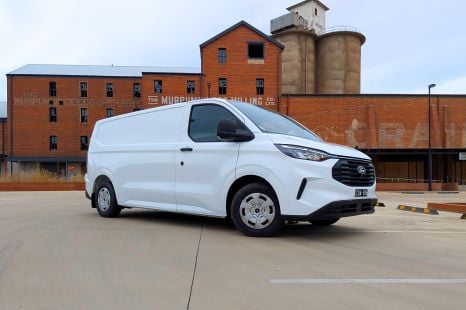

William Stopford
3 Days Ago
With the "Design the Future" series of articles, our goal is to showcase the inspiring work of professional designers and high-level design students.

Design Contributor
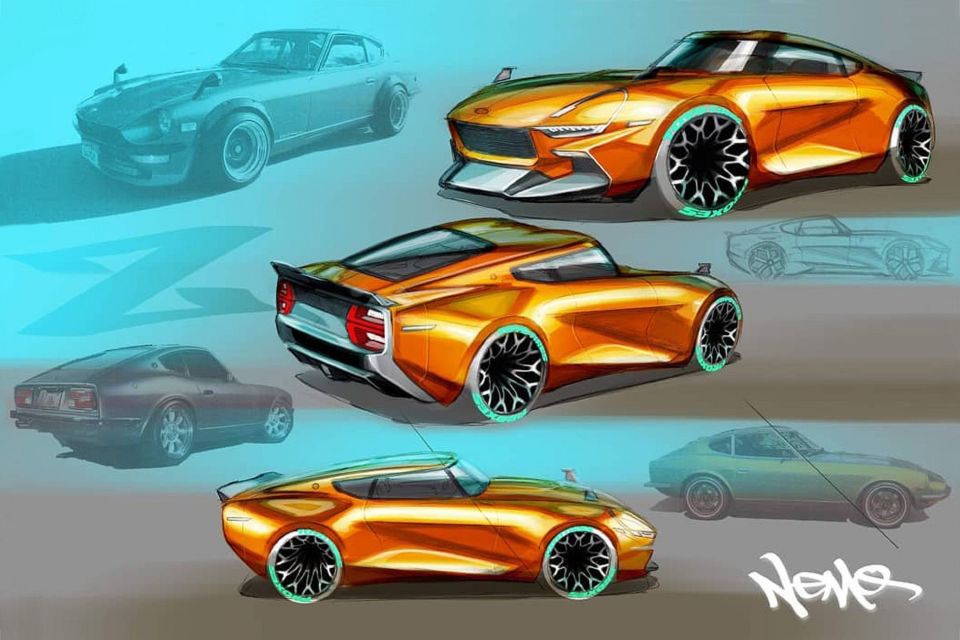

Design Contributor
David Scott Neall II (known as Nemo) is the Director of Design Co-Creation at Local Motors.
After a decade of freelance design experience, from personal customised car builds to award-winning SEMA project vehicles, Nemo joined the Local Motors online community – first as an active community member, and then as a leading transportation designer.
He has been an integral part of the interior and exterior design development process for the Rally Fighter, Strati, Swim, SF-01, Olli 1.0 and Olli 2.0.
Nemo lives in Maricopa, Arizona and besides designing cars is a father of six, a DJ, a music producer, and a prolific graffiti artist.
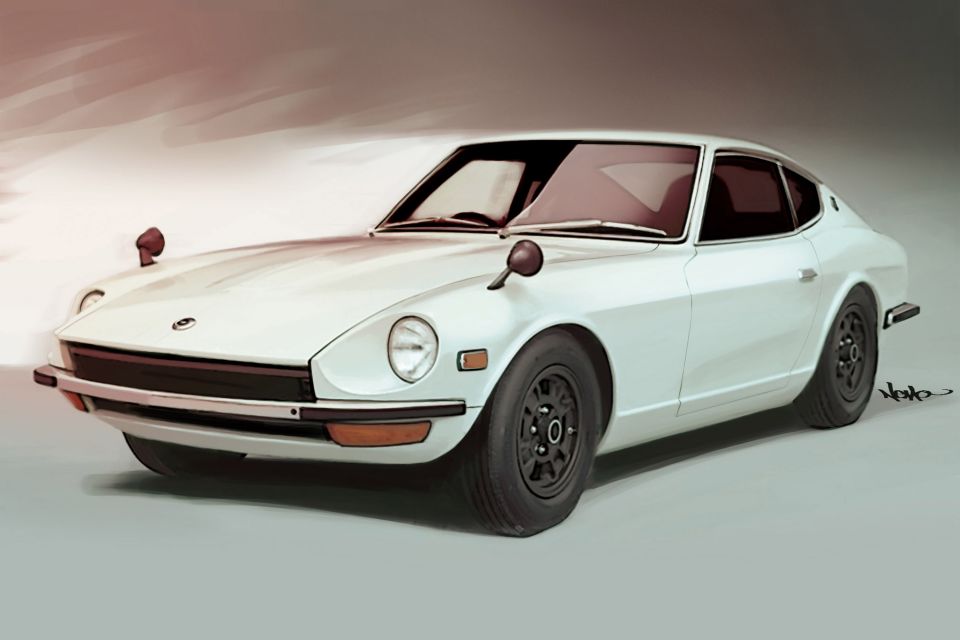
A modern reinterpretation of the 1969 Nissan Fairlady Z, also known as the Datsun 240Z (S30).
This classic Japanese sports car was one of the first of its kind, and has reached an iconic status thanks to its unique combination of design, performance, and driving dynamics.
“A few years ago I had the pleasure of meeting Peter Brock, the original designer of the Datsun 240Z, at SEMA where we watched a full steel recreation of his famous Shelby Cobra Daytona Coupe,” Nemo said.
“Being a huge fan of the Z cars, I took the opportunity to discuss some of the most iconic aspects of the 240 Z, and what is missing in the more recent generations.”
The new model could serve as a successor to the Nissan 370Z, incorporating a modern and dynamic design with retro-inspired cues.
As for the powertrain, Nemo envisioned the 2020’s reincarnation of the Z-Car to have three derivatives. First there would the 4Ze, a fully electric sports car with AWD.
Then, the 240Z – a plug-in hybrid with a 2.4-litre four-cylinder engine working together with an electric motor at the rear axle.
Finally, the 400Z would be the flagship RWD version with a twin-turbo V6 mated to a manual gearbox.
Depending on the powertrain, the Z-Car would produce between 200kW and 300 kW. Those characteristics would make it a great rival for the likes of the Toyota GR Supra, the BMW Z4, and the next Porsche 718.
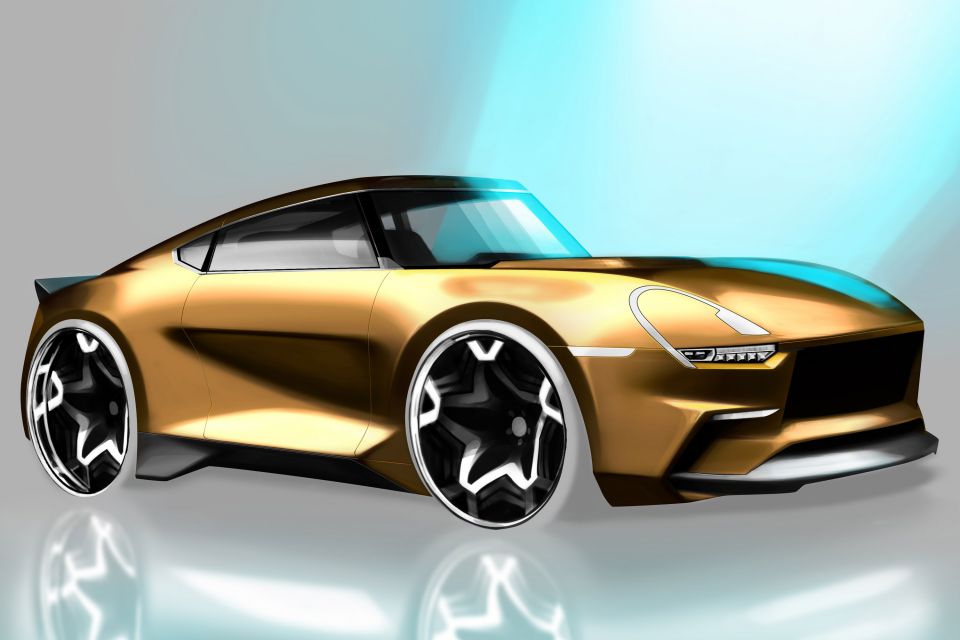
“At the front, the Z-car has a low and sharp nose with a wide grille, a bulge on the bonnet, sculpted air intakes and a prominent splitter.
“The slim and horizontally-arranged headlights have extensions as a nod to the oval inserts for the circular headlights of the original 240Z. Two rear-view cameras are mounted on the front fenders – resembling the wing mirrors on the classic.
“On the profile, the proportions hint at the traditional front-engined rear-wheel-drive layout (long hood, short wheelbase, cabin moved rearwards).
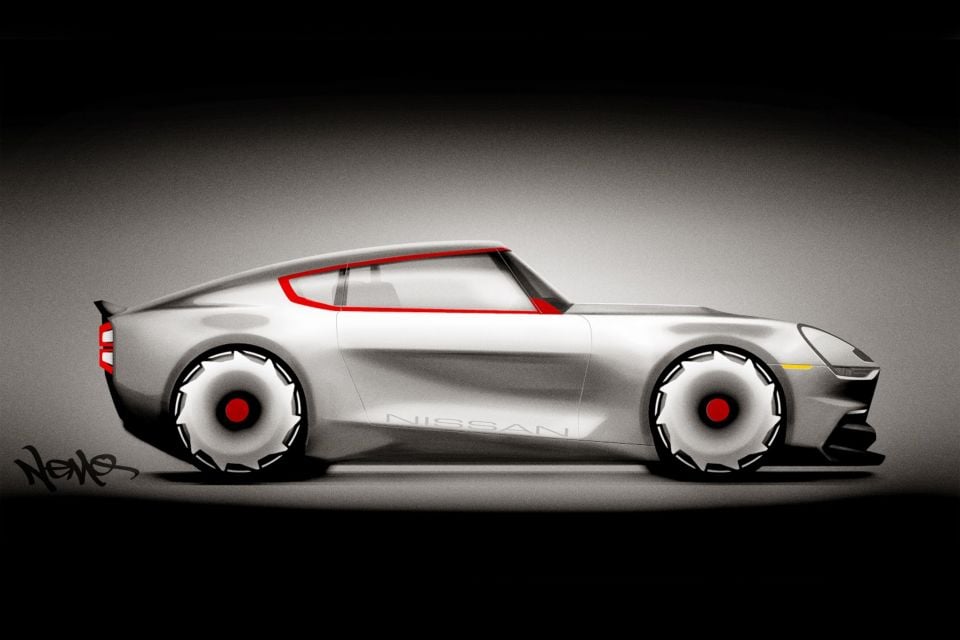
“Between the muscular fenders that are emphasising the large-diameter wheels, there is a straight character line that works as a continuation of the headlights.
“Underneath, the creases of the bodywork create a muscular appearance without the need for fake vents or intakes. The upright windshield with the black a-pillars, the side windows and the dropping roofline, creates a classic wraparound look – similar to the Nissan GT-R.

“The rear end is the most nostalgic view of the car, with rectangular LED taillights reminiscent of the ones on the 240Z. The black colour of the tail, the rear spoiler, the discreet rear bumper and the integrated diffuser (similar to the Nissan IDx concept of 2013) is a cool touch, making a great contrast with the sculpted bodywork for a two-tone look.
“The electric variant wouldn’t have a tailpipe, a feature that would differentiate it from the gasoline-powered 240Z and the flagship 400Z.
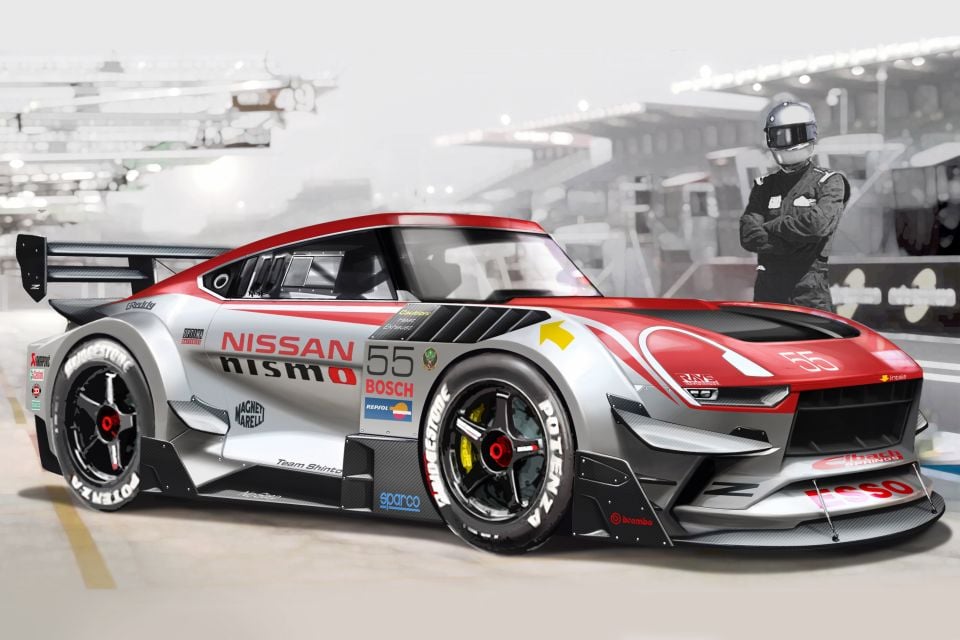
As a bonus, Nemo created this rendering of a racing version of his Z Car.
As you can see, the aggressive wide-body kit includes a huge front splitter, hood scoop, aerodynamic fins on the front bumper, wide fenders with integrated vents, side sill extensions, a large rear wing, plastic side windows and racing wheel/tyre combination.
For the livery, he chose silver and red graphics, with Nismo, Sparco, Magnetti Marelli, Bosch, Brembo and Esso decals to complete the racing atmosphere.
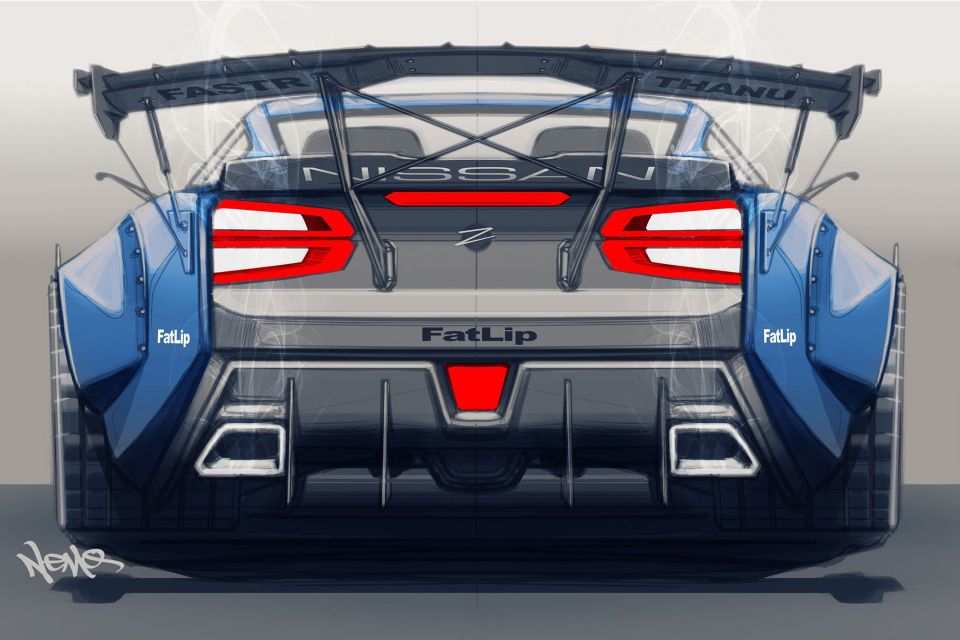
“As I grew up, I enjoyed watching late-night live races of JGTC, Australian Supercar, WRC, and DTM on the Speed Channel in the US,” he said.
“The huge wide-body flares, crazy aero surfaces, and vents made for such amazing looking cars that seem to be coming back into style with the rise of recent tuner artists.
“I thought it would be great to give my own concept the same treatment, which only serves to make it feel even more real to me. ”
The Nissan Z Car 2020 is an interesting match between retro-inspired proportions and modern design touches.
Even though it doesn’t exactly follow the current design language of Nissan (called Timeless Japanese Futurism) it can be identified as a Z Car thanks to the characteristic roofline and the design of the tail.
In one sentence we would describe it as a Japanese sports car with a strong flavour of American muscle.
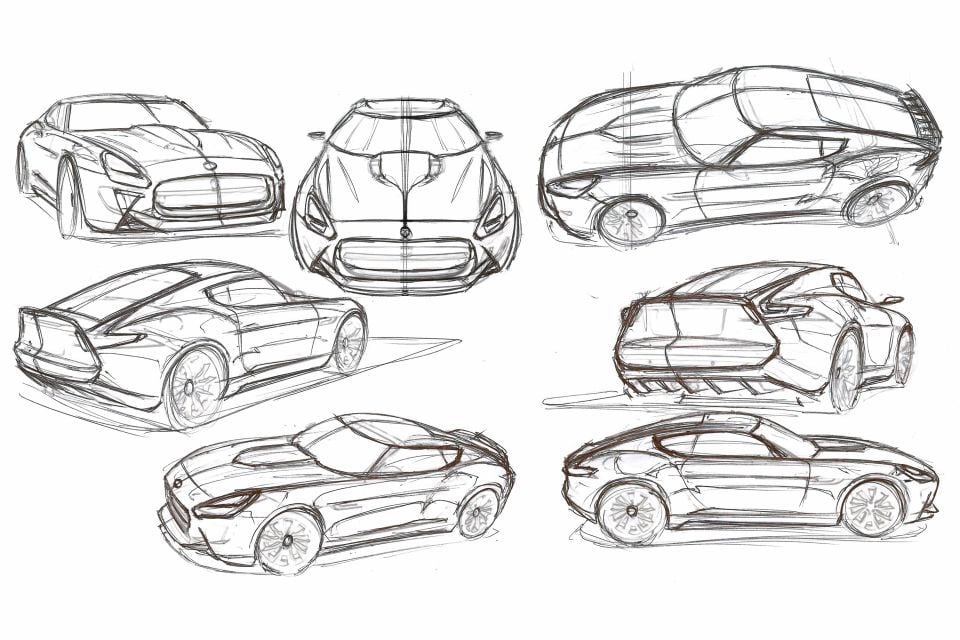
What are your thoughts on Nemo’s concept car? Share your comments below, together with some features that you would love to see on the actual Nissan 370Z successor which is currently under development.
Disclaimer: This car was independently designed by David Scott Neal II as a free-time project, and is not associated by any means with Nissan Motor Co or any of its designers.
Take advantage of Australia's BIGGEST new car website to find a great deal on a Nissan.


William Stopford
3 Days Ago
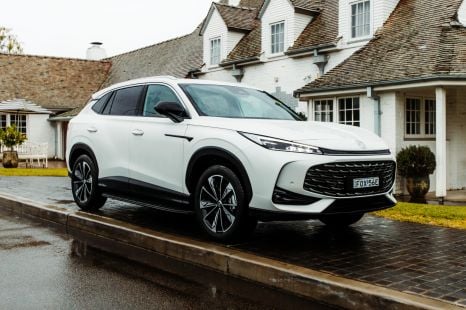

James Wong
1 Day Ago
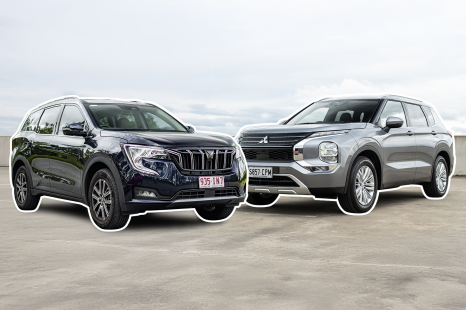

Andrew Maclean
1 Day Ago


Max Davies
17 Hours Ago
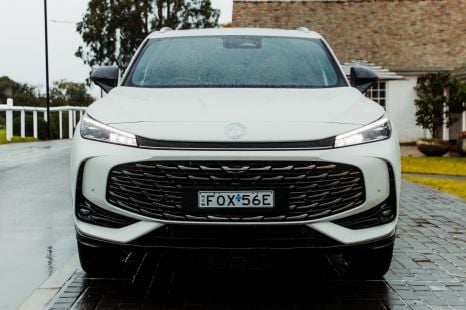

James Wong
13 Hours Ago


Josh Nevett
12 Hours Ago